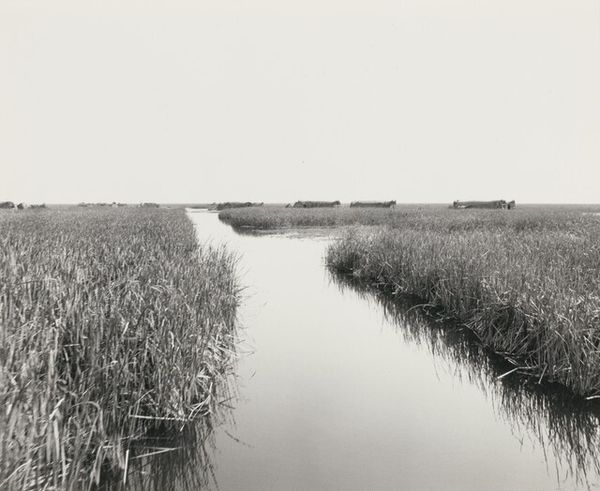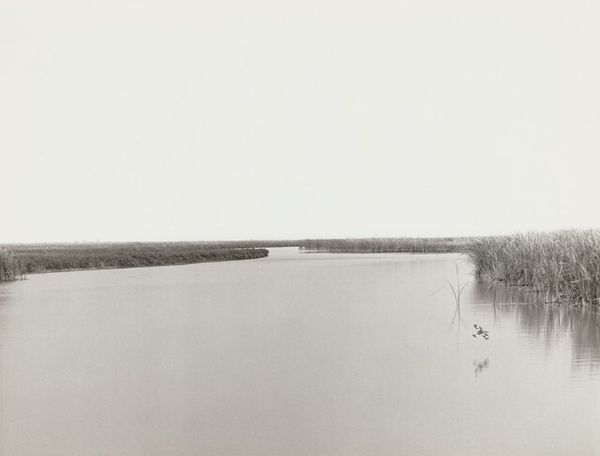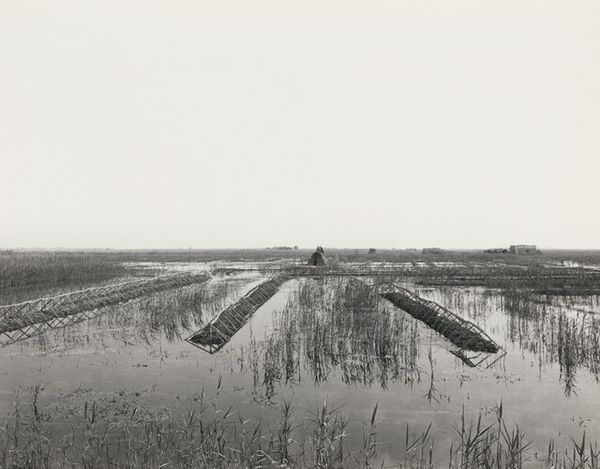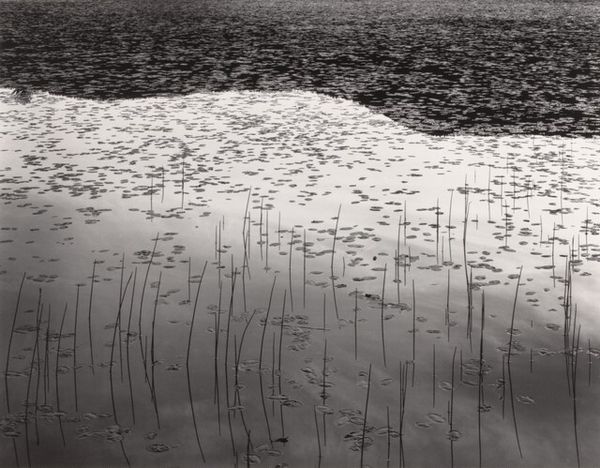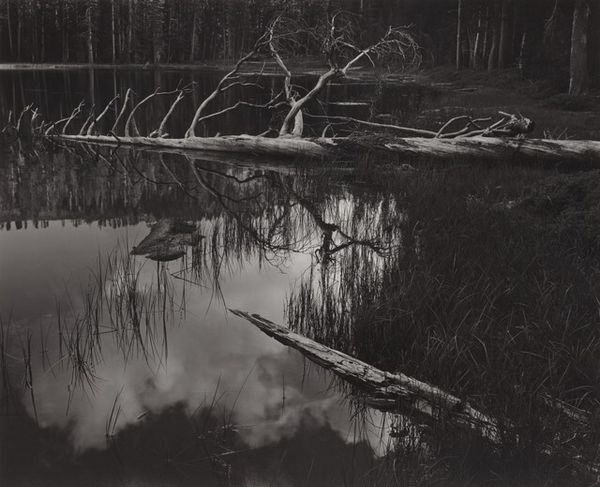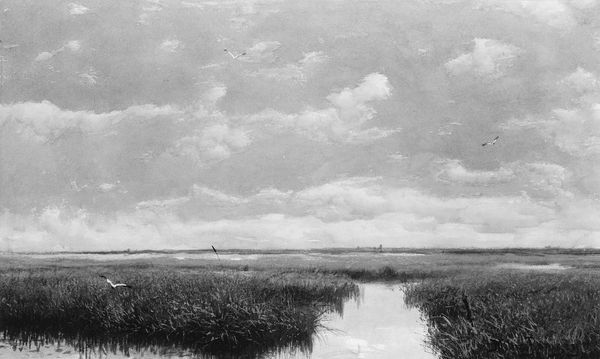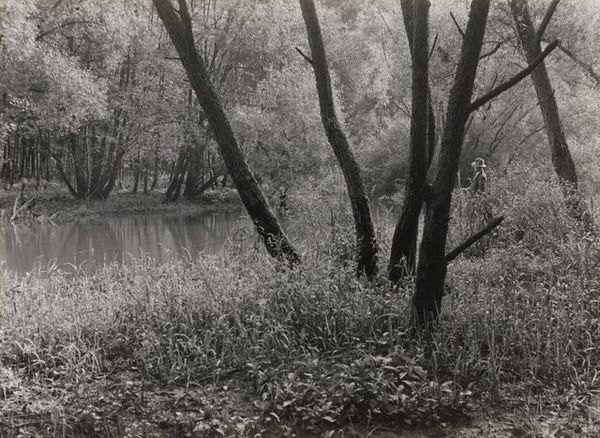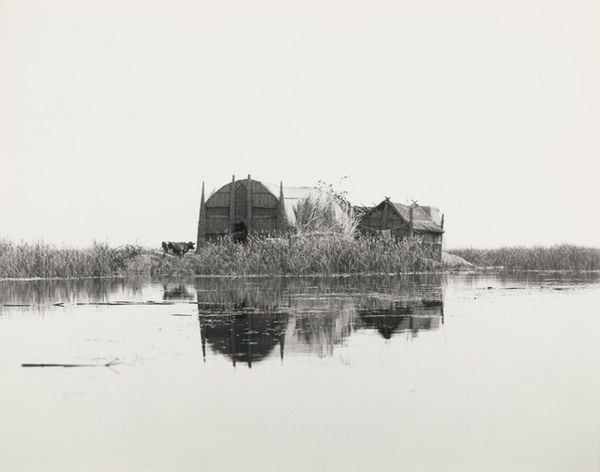
photography, gelatin-silver-print
#
conceptual-art
#
landscape
#
photography
#
gelatin-silver-print
#
monochrome photography
#
realism
#
monochrome
Dimensions: image/sheet: 24.3 × 30 cm (9 9/16 × 11 13/16 in.)
Copyright: National Gallery of Art: CC0 1.0
Curator: This evocative image is an "Untitled" gelatin silver print from 1980 by Ursula Schulz-Dornburg. Editor: Wow, it's stark. Makes me feel like I’m the only person left on Earth, just standing in a field somewhere, listening to the wind whisper through the reeds. Is that water I see cutting through? Curator: Yes, that element offers a very strong horizontal emphasis, slicing through the frame. Notice the nearly monochromatic palette and the tonal variations Schulz-Dornburg employs. It pushes us beyond mere representation. It’s conceptual, almost diagrammatic. Editor: It does feel symbolic, a path leading nowhere. There’s a lot of emptiness above the marsh. That nothingness amplifies the wildness, like all these stalks of grass are desperately reaching, trying to fill the void. Curator: Interesting that you highlight the “void." Formally, the composition employs a strategy common in her oeuvre: presenting liminal spaces, zones of transition or abandonment. Here, the use of gelatin silver allows for a rich gray scale, with carefully rendered textures, especially evident in the tall grasses. Editor: Texture! Definitely feel that in the way the light grazes across all those sharp blades. They create a kind of visual static, like buzzing energy you can almost hear. Reminds me of field recordings capturing sonic environments. Visually, she’s kind of doing the same thing. Curator: It encapsulates, quite effectively, a key concern of conceptual landscape photography. The deconstruction of Romantic landscape tropes is obvious. She isn't celebrating nature’s grandeur but investigating spatial relationships. The monochrome removes all potential for easy emotional appeal. Editor: I don't know, it works on me emotionally, anyway. It evokes melancholy, transience. Those bent reeds at the forefront seem weighted down by sorrow. I see more than cold, detached analysis; it's about atmosphere, an introspective look. Curator: A testament to Schulz-Dornburg’s ability to complicate simple readings through compositional choices. We see the landscape not as a given, but a series of constructed, ideologically fraught, relations. Editor: True. The desolation isn’t just there. She crafts it with a perspective that manages to be both detached and deeply intimate. Curator: Indeed. And as we reflect on this work, we find it provokes not only thoughts about space and representation, but feelings about place and presence as well. Editor: Agreed. It has an understated power, urging you to stay, breathe, and just simply *be*.
Comments
No comments
Be the first to comment and join the conversation on the ultimate creative platform.

